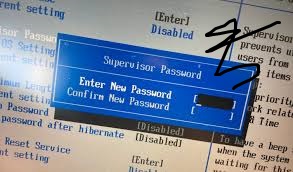Overclocking is the most commonly applied and pleasant operations you can make after unlocking BIOS.
Originally it is the beating of the CPU beyond the recommended speed set by the manufacturer thus improves its capability in processing information important in tasks such as gaming, video editing, and 3D rendering among others.
Steps to Overclock Your CPU:
Further, Multiplier Values settings in BIOS – basic clock (BCLK) frequency is normally present in each CPU and doesn’t remain constant staying central for all performances.
There are a number of options that you can tweak to boost the unit’s speed, one of which is the CPU multiplier also called the CPU ratio.
For instance, if the base clock of the processor is one hundred megahertz and the multiplier is thirty then the processor speed is three thousand and three hundred megahertz (30 x one hundred megahertz), if, however, the base clock remains one hundred megahertz and the new multiplier is thirty-five, then the new speed would be three and half gigahertz (35 x one hundred megahertz).
There are also some disadvantageous aspects related to this multiplier; going very high with this value is dangerous unless you want to destabilize the system or destroy it.

- Among the changes possible from overclocking the voltage settings are some of the main reasons why setting your CPU to overclock will only be counterproductive.
Because changing of CPU core voltage (Vcore) may be useful to keep stability, ⚙ A little more voltage is desirable to maintain high speed transmitting but be careful with the heat output by the processor. - Check Temperatures to Avoid Overheating – Overclocking causes increase in temperatures and this may lead to damages on the components.
First turn on your computer then convert to using one of the main hardware monitoring application like the HWMonitor or CoreTemp to check the CPU temperature.
Ideally, the CPU temperature should not exceed 85 degrees Celsius in load condition. If the temperatures get to high, one can lower the amount of overclock or acquire a better cooling system.
Benefits of CPU Overclocking:
For example, better stress on the applications for CPU intensive tasks like rendering the codes and others.
- Improved gaming due to the fact that some games heavily rely on CPU rather than graphics.
- Improved functionality in specifically threaded applications that are likely to gain from higher clock rates.
BIOS Security Features and Risks
Secure Boot and TPM Settings
BIOS security features are still aimed at preventing unauthorized access to your computer. Unlocking BIOS allows you to:
- This is done through enabling TPM otherwise known as Trusted Platform Module for Windows security features.
- Secure the computer to avoid further attacks when it Boote through the use of UEFI Secure Boot.
Potential Security Risks
As much as one may need to unlock BIOS, this may cause the system to have some risks and become open to vulnerabilities. Always:
- Keep your BIOS updated
- Avoid making unnecessary changes
- Set BIOS passwords to ensure protection of the equipment
BIOS Modding: Taking Customization Further
What Is BIOS Modding?
BIOS modding is the process of writing new modded firmwares that add more options than most standard BIOS has implemented.
Benefits of BIOS Modding
- Enables hidden overclocking features
- Unlocks hardware compatibility settings
- Allows advanced power management tweaks
- Risks of BIOS Modding
- Damaging your motherboard is certainly possible if the right procedure is not followed
- Voids manufacturer warranty
- This might lead to problem with future updates of the program.
Conclusion
Telling the access bios can greatly improve your computing experience, compatibility, and speed of your PC. Nevertheless it has its benefits, it should be accomplished that way carefully. It is recommended to always back up the settings, follow the manufacturers’ instructions and guidelines while unlocking the full potential of any system.
